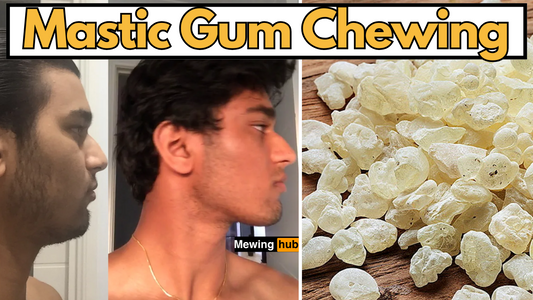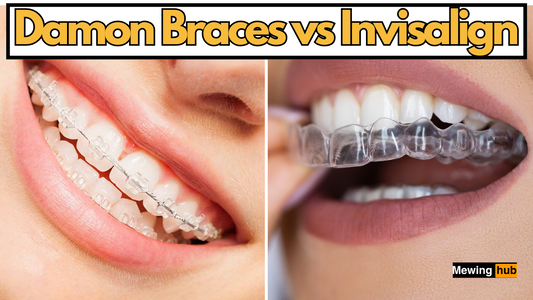Does Facial Cupping Really Work for Sculpting?

Share
What Is Facial Cupping?
Facial cupping involves using small suction cups on the face to promote circulation and rejuvenate the skin.

The cups are typically made from glass, silicone, or plastic, and they create a vacuum effect when applied to the skin. This suction pulls the skin and underlying tissues upwards, which can encourage blood flow, lymphatic drainage, and skin tightening.
Some proponents of facial cupping believe that the technique can also sculpt and lift the face, improving the contours of the cheeks, jawline, and even reducing puffiness.
While facial cupping has been used for centuries, it has only recently gained mainstream attention in the beauty world. Let's take a deeper look at whether facial cupping can truly sculpt your face or if its effects are more superficial.
How Does Facial Cupping Work for Sculpting the Face?
Results after a couple sessions of facial cupping
Facial cupping works by creating a vacuum effect that lifts and stretches the skin. This action can increase blood circulation to the area, helping to deliver more oxygen and nutrients to the skin. The increased circulation may result in a temporary lifting effect, making the skin appear firmer and more toned.
-
Collagen Production: Increased blood flow can stimulate collagen and elastin production, essential proteins that help maintain skin's firmness and elasticity. Over time, more collagen may lead to a firmer, smoother appearance, potentially sculpting the facial contours.
-
Lymphatic Drainage: The suction technique also promotes lymphatic drainage, which helps to remove excess fluid and toxins. This can reduce puffiness, especially in areas like the under-eye bags or the cheeks.
-
Sculpting the Jawline and Cheeks: By increasing circulation and toning the skin, facial cupping can potentially lift the cheeks, define the jawline, and soften the appearance of lines and wrinkles. While it may not give you permanent results, facial cupping can temporarily improve facial definition.
Can Facial Cupping Really Sculpt Your Face?
While facial cupping can have positive effects on skin appearance and temporary sculpting, it's important to manage expectations. Here are some insights into its potential:
-
Temporary Results: The most noticeable effects of facial cupping, such as a lifted or sculpted appearance, are typically short-lived. After a session, you may notice smoother, firmer skin, but these results generally last for a few hours to a day.
-
Improved Skin Tone: The increased circulation and collagen stimulation can result in healthier, more radiant skin over time. If used consistently, facial cupping may help to improve skin tone, but it won't radically change your face's structure.
-
Sculpting Effects: Facial cupping can help to enhance the appearance of your face temporarily, but it won't drastically change your facial features. If you're looking for a permanent sculpted look, facial cupping alone isn't the solution.
The Benefits of Facial Cupping

Despite the temporary nature of its results, facial cupping offers several potential benefits, including:
-
Improved Circulation: Facial cupping enhances blood flow to the skin, which can result in a healthier complexion and a reduction in skin dullness.
-
Reduced Puffiness: By stimulating lymphatic drainage, facial cupping helps to flush out excess fluid, reducing puffiness in the face, particularly around the eyes and cheeks.
-
Wrinkle Reduction: Increased collagen production can help reduce the appearance of fine lines and wrinkles, giving the skin a smoother, more youthful look.
-
Relaxation: Many users report a sense of relaxation after a facial cupping session, which can also help alleviate facial tension and stress.
How to Perform Facial Cupping at Home
If you're interested in trying facial cupping for yourself, it's important to follow proper techniques to avoid skin damage:
-
Choose the Right Cups: Use cups specifically designed for facial use. These are typically smaller and softer than body cupping cups.
-
Cleanse Your Skin: Before starting, cleanse your face thoroughly to remove makeup, dirt, and oils.
-
Apply Oil: Apply a facial oil or serum to create a smooth glide for the cups, preventing skin irritation.
-
Gentle Suction: Gently place the cups on your face and apply light suction. Move the cups in an upward motion, starting from your jawline and moving towards the forehead.
-
Duration: Limit each session to about 5-10 minutes to avoid bruising or irritation.
Does Facial Cupping Have Any Side Effects?
While facial cupping is generally safe for most people, it's important to be aware of potential side effects, including:
-
Bruising: If the suction is too strong or if the cups are left on the skin for too long, it can cause bruising or redness.
-
Skin Irritation: Overuse of facial cupping can lead to skin irritation, especially for sensitive skin types. Always ensure that you're using appropriate suction levels and gentle techniques.
-
Not Suitable for Everyone: If you have certain skin conditions (like rosacea or eczema) or a history of blood clotting disorders, facial cupping may not be recommended.
Facial Cupping vs. Other Sculpting Methods
While facial cupping can offer some sculpting benefits, it's important to compare it with other popular facial sculpting methods:

-
Facial Massage: Unlike cupping, facial massage is a more manual method of stimulating circulation and promoting lymphatic drainage. It can provide similar benefits in terms of reducing puffiness and toning the skin.
-
Botox and Fillers: These are more invasive treatments that provide longer-lasting sculpting effects, but they come with higher costs and risks. Facial cupping is a non-invasive alternative.
-
Face Yoga: Regular face exercises can help strengthen facial muscles, which can also improve the overall tone and sculpting of the face over time.
- Mewing: Mewing is a new trend that suggests that your tongue posture can change your face over time. Learn all about mewing.
Conclusion: Is Facial Cupping Worth It?
Facial cupping can be an effective way to temporarily sculpt and lift the face, reduce puffiness, and enhance skin tone. While the results are not permanent, consistent use can improve skin texture and give you a radiant complexion.
However, if you're looking for drastic and permanent changes to your facial structure, facial cupping alone is not the solution. As with any beauty treatment, it's important to maintain realistic expectations and consider combining facial cupping with other skincare routines for optimal results.









